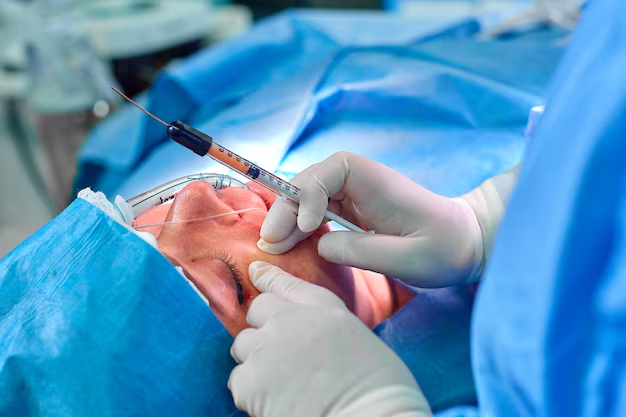Discovering Cataract Surgery: A Comprehensive Guide to the Procedure
We all cherish our vision, and maintaining eye health naturally becomes a pivotal concern as we age. Cataracts, a common eye condition, can cloud this clear vision, necessitating surgical intervention. Curious about how this process works? Understanding cataract surgery can demystify the journey to clearer sight.
What Are Cataracts?
Before diving into the surgical procedure, let’s clarify what cataracts really are. A cataract is a clouding of the lens in your eye, leading to a decline in vision. This condition can make routine activities like reading or driving increasingly challenging. It’s not unusual as we get older, and the great news is that science has mastered a way to effectively restore sight through cataract surgery.
Causes and Symptoms
Cataracts often develop with age, but factors like diabetes, smoking, and prolonged sun exposure can speed up the process. Common symptoms include:
- Blurry vision
- Faded colors
- Increased sensitivity to glare
- Difficulty seeing at night
- Frequent changes in prescription glasses
Recognizing these symptoms early can prompt timely medical evaluation.
Preparing for Cataract Surgery
Embarking on the path to improved vision through surgery requires a bit of preparation. Understanding the pre-surgery process helps in setting the right expectations.
Initial Evaluation
The journey begins with a comprehensive eye examination. An eye specialist will evaluate the severity of your cataract and its impact on your vision, discussing whether surgery is the right path.
- Questions to ask:
- What are the pros and cons of surgery at this stage?
- What type of lens implant is appropriate?
- Are there lifestyle adjustments needed prior to surgery?
Pre-Surgery Preparations
Before the surgery, expect to receive detailed instructions:
- Health check-ups: Ensuring your general health is stable.
- Medications: You may need to adjust or discontinue certain medications. Consulting with healthcare providers regarding blood thinners or other significant medication changes is crucial.
- Fasting: It’s common to have food and drink restrictions several hours before the procedure.
By being organized and informed, you ease the surgery day nerves.
The Cataract Surgery Procedure
Cataract surgery is a common, routine procedure typically performed on an outpatient basis. Here’s what you can expect once you’re in the operating room.
Key Steps in the Procedure
Preparation: The eye is numbed with drops or a local anesthetic. This ensures that you feel no pain during the procedure.
Micro-Incision: A tiny incision is made at the edge of the cornea.
Lens Removal: A technique called phacoemulsification is often used. This involves an ultrasound probe breaking the cloudy lens into small fragments, which are then gently suctioned out.
Lens Replacement: A clear, artificial lens (intraocular lens or IOL) is inserted in its place.
Closure: The tiny incision is often self-sealing, requiring no stitches.
Duration and Sensations
The surgery itself is brief, typically under 30 minutes. Patients remain awake, maintaining minimal participation by looking steady at a light. Thanks to localized anesthetic, discomfort is minimal, though some pressure or water sensations may be noticeable.
Post-Surgery Recovery and Care
Recovering after cataract surgery is an essential phase that ensures optimal results. Let’s walk through the recovery timeline and care requirements.
Immediate Post-Operative Phase
Post-surgery, you’ll rest in a recovery area for a short period. Since vision might be blurry immediately after the procedure, having someone to drive you home is wise.
Recovery Guidelines
Healing generally spans several weeks. To aid recovery:
- Eye Protection: Use prescribed eye shields, especially while sleeping, to prevent irritation.
- Medication: Follow prescribed eye drops to ward off infections and control inflammation.
- Activity Restrictions: Avoid heavy lifting, strenuous activities, or anything that might stain the eye. Adhering to doctor's advice protects against complications.
Follow-Up Appointments
Regular follow-ups assess healing progress, and glasses prescriptions might need adjustments as vision stabilizes.
Understanding Different Types of IOLs
Selecting an appropriate intraocular lens (IOL) can significantly influence post-surgery satisfaction. The IOL replaces your natural lens, and various types cater to different visual needs.
Types of IOLs:
- Monofocal IOLs: These provide clear vision at a single distance (usually far). Reading glasses may still be necessary.
- Multifocal IOLs: Designed to reduce or eliminate the need for glasses by offering multiple focus zones.
- Toric IOLs: Beneficial for solving astigmatism in addition to cataracts, correcting blurred distance vision.
Making the Right Choice
Discuss lifestyle needs and visual expectations with an eye care professional to identify the lens type aligning with personal preferences.
Potential Risks and Complications
While cataract surgery is deemed safe, like any medical procedure, it carries potential risks. Understanding these helps in making informed decisions.
Common Risks
- Infection
- Bleeding
- Swelling
- Dislocation of the lens
- Glare or halos around lights
Post-Surgery Concerns
Immediate reporting of persistent pain, significant vision changes, or signs of infection allows timely medical intervention ensuring continued recovery progress.
💡 Key Takeaways for Cataract Surgery
- Preparation is crucial: Thorough eye exams and adhering to pre-surgery guidelines sets the stage for success.
- Short procedure time: With patient cooperation, the procedure unfolds swiftly.
- Aftercare matters: Diligently following post-surgery care instructions supports healing.
- Lens options are varied: Personal lifestyle and vision goals guide IOL selection.
- Understanding risks: Being informed about potential complications fosters proactive post-surgery monitoring.
Envisioning a Brighter Tomorrow
Cataract surgery is a transformative experience for many. The process can feel daunting initially, yet the reward of enhanced vision imparts immense quality of life benefits. A proactive approach, from preparation through recovery, lays the foundation for eye health success.
By removing the lens clouding the path, cataract surgery opens doors to clearer vision, fostering independence and revitalizing cherished activities. Explore your options, consult with eye specialists, and navigate this journey with clarity and confidence. Your eyes, after all, are worth it.
